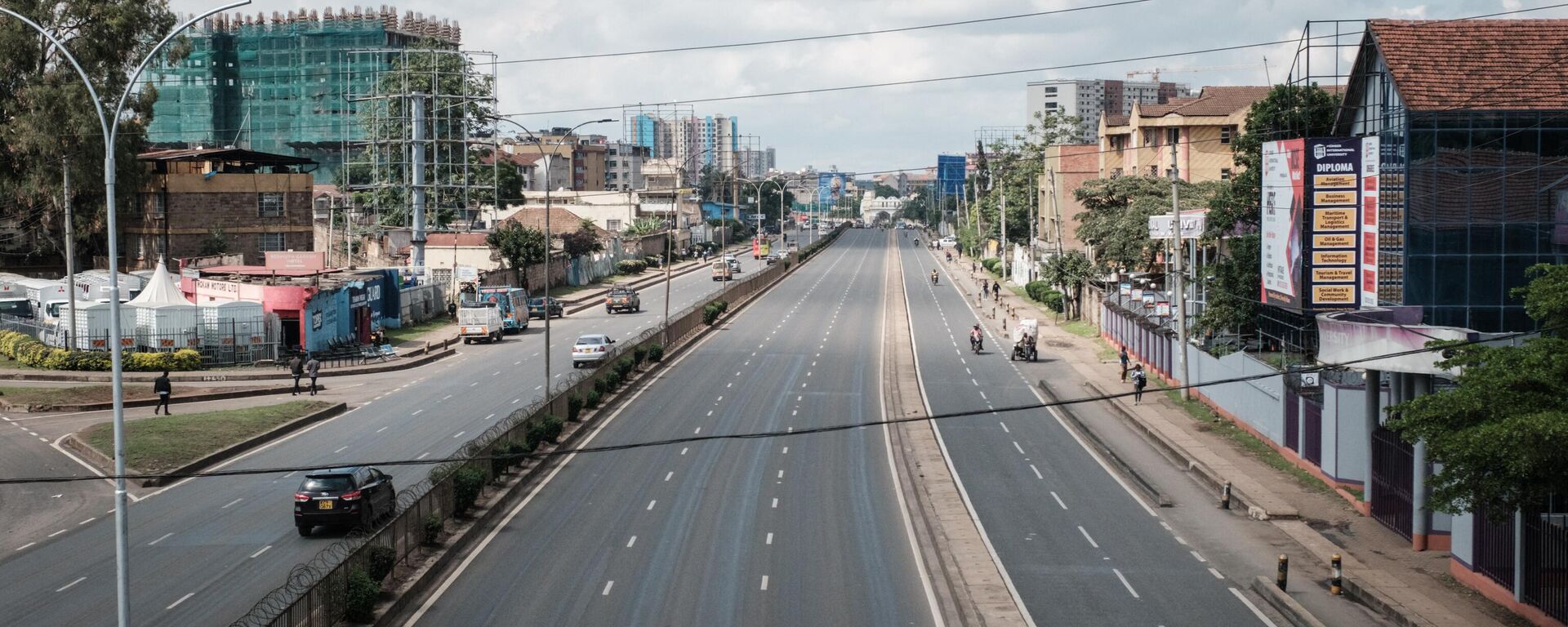https://en.sputniknews.africa/20240518/not-just-a-corridor-afdb-head-on-lobito-project-and-other-african-transport-network-improvements-1066609886.html
'Not Just a Corridor': AfDB Head on Lobito Project and Other African Transport Network Improvements
'Not Just a Corridor': AfDB Head on Lobito Project and Other African Transport Network Improvements
Sputnik Africa
The Lobito Corridor is a railway network that runs through the mineral- and oil-rich areas of Angola, the Democratic Republic of Congo (DRC), and Zambia. It... 18.05.2024, Sputnik Africa
2024-05-18T17:47+0200
2024-05-18T17:47+0200
2024-12-13T15:16+0100
sub-saharan africa
african development bank (afdb)
railway
kenya
tanzania
ethiopia
democratic republic of the congo (drc)
zambia
angola
east africa
https://cdn1.img.sputniknews.africa/img/07e7/0a/15/1062973283_349:0:1300:535_1920x0_80_0_0_2d6af976c751c25a0ead2be5859fbe0d.jpg
The Lobito Corridor serves as a great illustration of how partners can collaborate to build essential corridors for Africa's growth, African Development Bank (AfDB) Group President Akinwumi Adesina said in an interview with The EastAfrican.The Lobito Corridor Project will provide the most efficient method of moving people and materials between the Angola port city of Lobito and the mineral-rich parts of the DRC and Zambia's Copper Belt. It will also stimulate investment and become a catalyst for faster development and integration of the region.Adesina also called for greater investment in railways if the continent is to decarbonize its transport systems and improve economic growth.The AfDB itself is an example of such investments. It is providing financial support of $696.41 million for Burundi and Tanzania to initiate Phase II of the Joint Tanzania-Burundi-DRC standard gauge railway project.Furthermore, the bank also funds other corridors in Africa, particularly the one that would link Kenya with Ethiopia and Tanzania.The 54-kilometer road construction within Kenya, which started in 2021, is expected to be completed by 2024. On the Kenyan side, the road project, which will cost about $50 million, will begin near Mtwapa town, situated on the Indian Ocean coast. It is funded by the African Development Bank, the African Development Fund, and the Kenyan government, among others.In April, media reported that the AfDB is also working on a 1,512 km Ethiopia-Sudan rail project, which will connect the Ethiopian capital, Addis Ababa, with the Sudanese Red Sea port of Port Sudan. A total of 594 km of railway will be laid on Ethiopian territory, while 918 km will be laid on Sudanese land.
https://en.sputniknews.africa/20231218/kenya-tanzania-road-is-over-one-third-complete--will-be-finished-by-2024-reports-reveal-1064183035.html
kenya
tanzania
ethiopia
democratic republic of the congo (drc)
zambia
angola
east africa
central africa
southern africa
Sputnik Africa
feedback@sputniknews.com
+74956456601
MIA „Rossiya Segodnya“
2024
Christina Glazkova
https://cdn1.img.sputniknews.africa/img/07e7/0b/07/1063380906_0:0:673:674_100x100_80_0_0_79628b4d0cd9f29291a57aa13bbf9e7a.jpg
Christina Glazkova
https://cdn1.img.sputniknews.africa/img/07e7/0b/07/1063380906_0:0:673:674_100x100_80_0_0_79628b4d0cd9f29291a57aa13bbf9e7a.jpg
News
en_EN
Sputnik Africa
feedback@sputniknews.com
+74956456601
MIA „Rossiya Segodnya“
Sputnik Africa
feedback@sputniknews.com
+74956456601
MIA „Rossiya Segodnya“
Christina Glazkova
https://cdn1.img.sputniknews.africa/img/07e7/0b/07/1063380906_0:0:673:674_100x100_80_0_0_79628b4d0cd9f29291a57aa13bbf9e7a.jpg
african development bank (afdb), railway, kenya, tanzania, ethiopia, democratic republic of the congo (drc), zambia, angola, east africa, central africa, southern africa, transportation, investment, the lobito corridor
african development bank (afdb), railway, kenya, tanzania, ethiopia, democratic republic of the congo (drc), zambia, angola, east africa, central africa, southern africa, transportation, investment, the lobito corridor
'Not Just a Corridor': AfDB Head on Lobito Project and Other African Transport Network Improvements
17:47 18.05.2024 (Updated: 15:16 13.12.2024) Christina Glazkova
Writer / Editor
The Lobito Corridor is a railway network that runs through the mineral- and oil-rich areas of Angola, the Democratic Republic of Congo (DRC), and Zambia. It connects Southern and Central Africa, providing access to Eastern Africa and a path to the Atlantic Ocean.
The Lobito Corridor serves as a great illustration of how partners can collaborate to build essential corridors for Africa's growth, African Development Bank (AfDB) Group President Akinwumi Adesina said in an interview with The EastAfrican.
“It is not just a corridor for the exit of unprocessed materials. The consortium that includes the US government, Africa Finance Corporation and AfDB has committed to providing $500 million as part of that roadwork. We have committed our risk guarantee facilities to support how to leverage resources on that corridor,” Adesina was quoted as saying.
The Lobito Corridor Project will provide the most efficient method of moving people and materials between the Angola port city of Lobito and the mineral-rich parts of the DRC and Zambia's Copper Belt. It will also
stimulate investment and become a catalyst for faster development and integration of the region.
Adesina also called for greater investment in railways if the continent is to decarbonize its transport systems and improve economic growth.
“When we talk about how to move products, as Africa, we have to invest more in railways. If you are trying to decarbonize your transport system, you need to invest a little more in electric rail systems; if you are going to open up heartlands, agriculture, minerals, metals and so on, because they are heavy things to move, and for haulage, you need rail,” Adesina said.
The
AfDB itself is an example of such investments. It is providing financial support of
$696.41 million for Burundi and Tanzania to initiate Phase II of the Joint Tanzania-Burundi-DRC standard gauge railway project.
“We are investing in the Dodoma airport, the Central Corridor that is linking Tanzania-Burundi into the DRC, which is a $3.8 billion effort. We provided $696 million to Tanzania, and we are using a syndication to help raise close to $3.3 billion to be able to build that corridor,” the bank's president said, as cited by the report.
Furthermore, the bank also funds other corridors in Africa, particularly the one that would link Kenya with
Ethiopia and Tanzania.
“We are also financing the corridor that links Addis Ababa to Nairobi – Mombasa over 1,000 km. That corridor alone has reduced the distance that people spent coming from Ethiopia to Nairobi from three days to less than 24 hours,” Adesina said. “It has helped improve trade between Kenya and Ethiopia by more than 400 percent.”
The 54-kilometer road construction within Kenya, which started in 2021, is expected to be completed by 2024. On the Kenyan side, the road project, which will cost about $50 million, will begin near Mtwapa town, situated on the Indian Ocean coast. It is funded by the African Development Bank, the African Development Fund, and the Kenyan government, among others.
In April, media reported that the AfDB is also working on a 1,512 km
Ethiopia-Sudan rail project, which will connect the Ethiopian capital, Addis Ababa, with the Sudanese Red Sea port of Port Sudan. A total of 594 km of railway will be laid on Ethiopian territory, while 918 km will be laid on Sudanese land.



